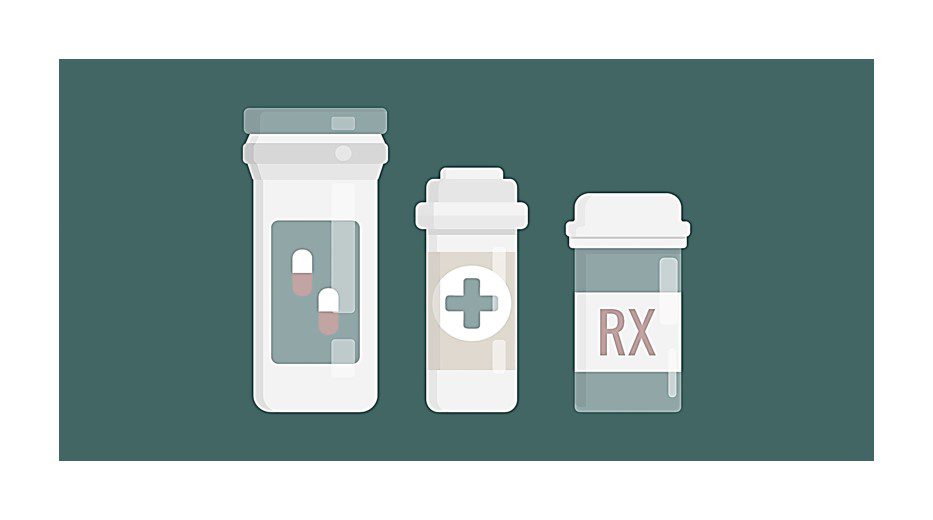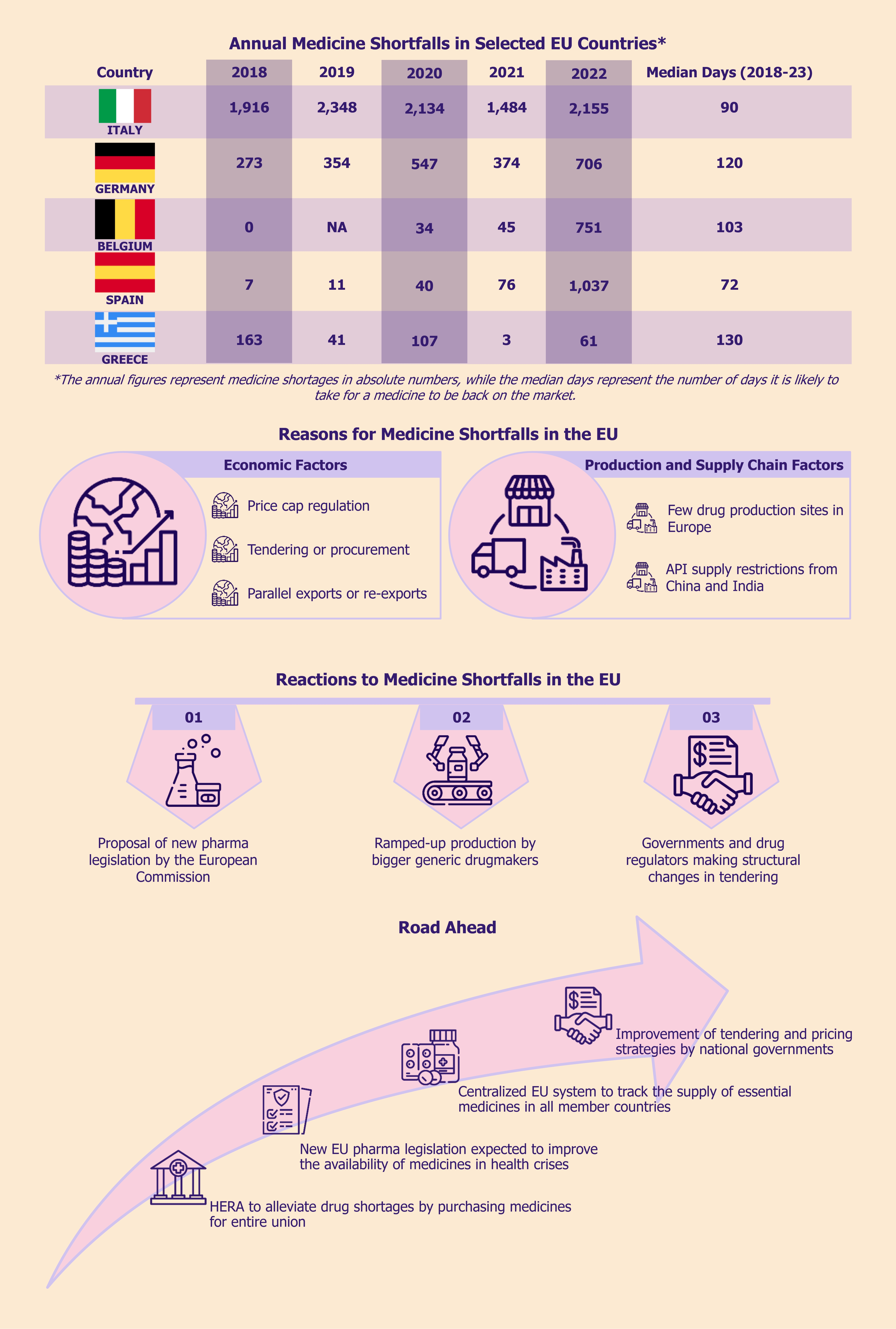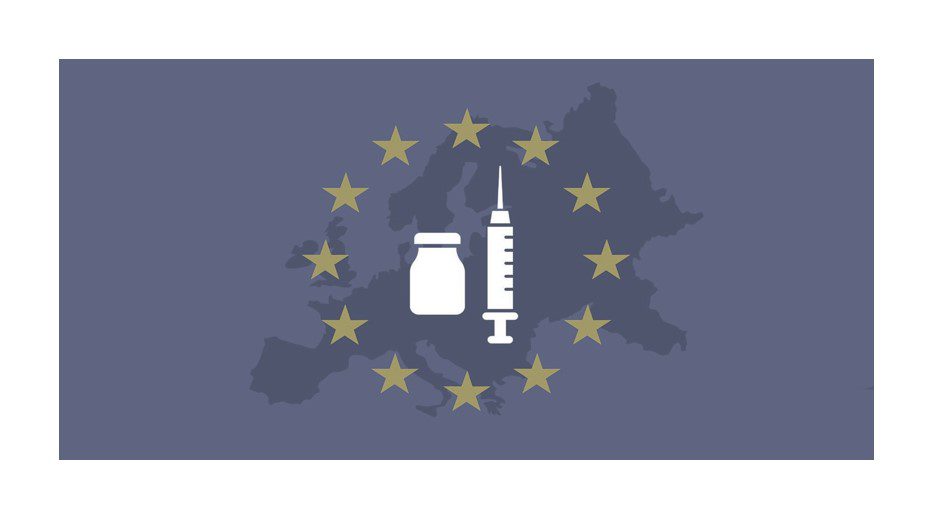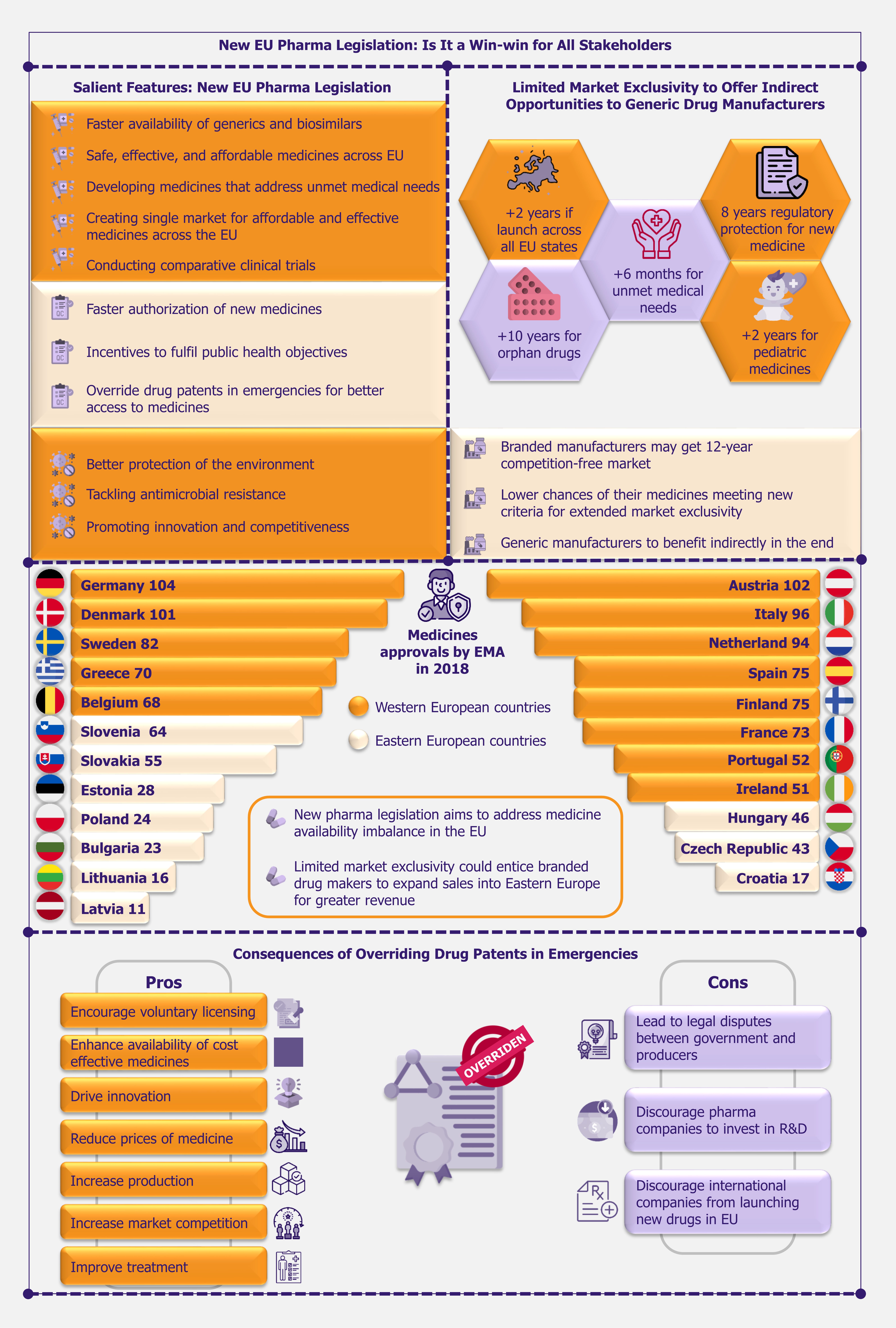Since the approval of the first drug, interferon beta 1b (IFNβ-1b), in 1993, the treatment landscape of multiple sclerosis (MS) has significantly changed. Currently, there exist more than 20 disease-modifying therapies (DMTs) to treat MS, encompassing orals, injectables, and infusions. These drugs, however, can cause adverse side effects such as toxicity, pregnancy-related complications, and gastrointestinal symptoms, among others. Moreover, about 5-10% of the patient population still develops disability. Despite the wide range of therapeutic options available, patients experience relapses and worsening disease symptoms, which significantly reduce their quality of life.
The ongoing challenges have driven pharmaceutical companies to develop and launch drugs that offer greater efficacy and safety, enhancing patients’ health outcomes in the longer term. In particular, significant efforts are geared towards treating the progressive forms of MS, such as Primary Progressive MS (PPMS) and Secondary Progressive MS (SPMS), for which therapies are currently limited.
Several emerging therapies are in various stages of development, targeting distinct mechanisms of the underlying disease etiology. Among all the emerging therapeutic approaches, Bruton Tyrosine Kinase Inhibitors (BTKIs) emerge as the most promising, currently in later stages of clinical trials, poised for approval. The potential advantage of BTKI agents is that they can treat both relapsing and progressive forms of MS.
Remyelination is another equally promising therapeutic approach, as it has the potential to promote myelination, restore axonal and neuronal health, and prevent disability; however, extensive clinical trials are essential to develop these drugs and fully integrate them into clinical practice.
On the other hand, monoclonal antibodies (mAbs) are becoming the most common therapeutic option due to their higher selectivity for B-cells (a type of immune cell), a fact that plays a crucial role in MS disease pathogenesis. The higher selectivity of mAbs allows to efficiently target these cells and reduce inflammation.

An Era of Innovation Novel Drugs Redefining Multiple Sclerosis Treatment Paradigm by EOS Intelligence
Pharma companies place high hopes on BTKI
Following the success of B-cell depleting therapies in treating MS, there has been a notable surge in interest in utilizing a novel class of medications called BTKI. BTK is an enzyme crucial for the functioning of B-lymphocytes, which elucidates the autoimmune response in MS patients. Unlike B-cell depleting therapies, which directly reduce the number of B-cells, BTKIs alter B-cell function, preventing relapse or slowing disease progression in MS patients.
These BTKIs can be taken orally, offering a convenient and easy way of administration. Another potential advantage is that BTKIs can cross the complex blood-brain barrier, which other MS drugs fail to do. Due to this potent efficacy, researchers believe that BTK inhibition can even act as a cure for MS.
Over the past few years, top pharma companies such as Roche, Sanofi, InnoCare, and Novartis have betted big on BTKI to treat MS patients. There are currently four BTKI agents that are being investigated for MS treatment – Sanofi’s Tolebrutinib, Roche’s Fenebrutinib, Novartis’ Remibrutinib, and InnoCare’s Orelabrutinib. Among these, Sanofi is ahead in the race, looking to submit its BTKI drug Tolebrutinib to treat Relapsing-Remitting Multiple Sclerosis (RRMS) for FDA approval in 2024. The company is also currently evaluating Tolebrutinib in a phase 3 trial for treating PPMS, which is expected to be completed in August 2024. If successful, Sanofi would become the first pharmaceutical company to offer BTKIs for both RRMS and PPMS. At present, Roche’s Ocrevus (Ocrelizumab) is the only DMT approved for treating PPMS. Sanofi’s approval of BTKIs would set the stage for direct competition between Roche and Sanofi in the treatment of PPMS. However, Roche’s Ocrevus patent expires in 2029, hence the company remains focused on its BTKI drug Fenebrutinib.
Similar to Sanofi, Roche is testing Fenebrutinib for treating both RRMS and PPMS patients. Roche is slated to complete its phase 3 studies investigating the drug to treat RRMS in November 2025 and PPMS in December 2026.
Novartis and InnoCare are slightly trailing in the competition. Novartis is currently evaluating its BTKI drug, Remibrutinib, in phase 3 clinical trials to treat people with RRMS, expected to be completed in 2029. On the other hand, InnoCare is currently evaluating Orelabrutinib in phase 2 trials for RRMS treatment. Both Remibrutinib and Orelabrutinib cannot be used to treat PPMS, which is a major limitation.
The development of BTKI fosters hope for the next era of MS treatment, as the therapy treats both relapsing and progressive MS. However, the safety and efficacy of each drug still needs to be understood.
Results from BTKI clinical trials indicate that these drugs differ in the strength of BTKI inhibition, BTK enzyme binding mechanism, and central nervous system (CNS) penetration. For instance, Sanofi’s Tolebrutinib showed greater CNS penetrance than the other BTKI agents, making the drug a potential candidate for treating PPMS. On the other hand, Roche’s Fenebrutinib is the only reversible BTK inhibitor that does not cause drug resistance, thus offering a better and safer treatment compared to the rest of the BTKI agents.
It is too early to predict the timeline and extent to which these drugs will be incorporated into the MS treatment paradigm. Until then, pharmaceutical companies in this space will persist in vying to accelerate the launch of their therapies in the fiercely competitive MS market.
Therapies targeting remyelination nearing clinical trials
In MS, myelin, a fatty tissue that surrounds the nerve cells, gets damaged, impairing the nerve’s ability to send electrical signals. At present, no therapies can promote myelin repair in MS patients. The current treatments focus primarily on reducing immune system activity and stopping immune cells from entering the CNS to reduce relapse rates and improve symptoms. The emergence of remyelination therapies holds extensive promise by protecting and restoring neuronal function, and preventing clinical disability in MS patients.
Remyelination works by either removing myelin debris or by creating a type of cells called oligodendrocytes to repair and replace the damaged myelin sheaths.
Over the last few years, pharmaceutical companies have shown heightened interest in evaluating and developing drugs that could promote remyelination. Some of these drugs are in later stages of development, nearing clinical trials.
For instance, in March 2024, Convelo Therapeutics, a US-based biotechnology company, announced that its two oral therapies showed promising evidence in myelin repair in animal models. Similarly, in the same month, the FDA granted a breakthrough device designation to a neurostimulator, for treating RRMS. The device is developed by SetPoint Medical, a US-based healthcare company, to slow myelin damage in RRMS patients. Both these companies have been working to begin clinical trials soon to test their remyelinating agents.
Numerous other companies across the world are also conducting extensive research on remyelination therapies for MS. Additionally, studies are underway to explore the potential of existing drugs, such as Metformin, Ibudilast, and Clemastine, among others, in promoting myelin repair. Encouraging results from preclinical trials and ongoing research studies foster growing optimism that this approach will become viable in treating MS patients in the future.
However, work on remyelination to treat MS patients has just begun, and there is still a long way to go. Defining the optimal clinical criteria for evaluating myelin repair appears largely undefined. There is also an urgent need to develop tools to measure the remyelination achieved and assess the drug’s effectiveness. That said, recent discoveries shedding light on remyelination processes and the functions of oligodendrocyte cells inspire hope that these issues will be effectively addressed in the coming years. Companies are also developing advanced imaging techniques to quantify myelination.
Overall, remyelination emerges as the sole therapy focused on repairing the neuro damage and improving the neurodegenerative conditions in MS patients, which is not currently fulfilled by existing treatments. This underscores remyelination as an inevitable treatment approach for both RRMS and PPMS.
Monoclonal antibodies continually transforming the MS treatment landscape
In recent years, mAbs have emerged as the indispensable treatment option for managing the relapsing forms of MS. These therapeutic agents offer high efficacy in managing symptoms while providing additional advantages such as ease of dosing and lower side effects compared to traditional therapies.
Given the promising potential of this therapeutic approach, pharma companies strive to introduce novel mAbs targeting different cells, molecular pathways, or molecules. Interestingly, new mAbs are also being developed to help repair the damage or disability that has already occurred. Thus, mAbs aim not only to alleviate symptoms but also repair the damage caused by MS, potentially reversing disability – a critical unmet need in the MS treatment landscape.
Among all the mAbs approved, antibodies that target the CD20 molecule (a protein found on the surface of B-cells) have gained significant interest lately. In recent years, the FDA has approved various therapies targeting anti-CD20 molecule. Currently, anti-CD20 mAbs such as Ocrelizumab, Natalizumab, Ofatumumab, Ublituximab, and Rituximab are used for the treatment of MS. Ocrelizumab, developed by Roche, stands out as the only mAb approved for treating both RRMS and PPMS. Ublituximab, developed by TG Therapeutics, is the latest addition to this group, approved by the FDA in 2022.
The mAb market is highly competitive. Hence, companies have been increasingly seeking to differentiate their products based on parameters such as efficacy, safety, and dosing convenience to capture larger market shares. For instance, Novartis considers the ease of administration to be the primary differentiating factor to help drive its mAb sales. The company launched Ofatumumab in 2020, the only mAb that can be administered via injection for treating RRMS. Similarly, Roche is developing Ocrevus subcutaneous injection version similar to the IV infusion. Phase 3 trials are currently underway to evaluate the drug to treat both RRMS and PPMS.
Companies have also been looking to differentiate their drugs in terms of safety. The common side effect of MS therapies is lymphopenia, i.e., lymphocyte depletion, which can pose risks, such as increased vulnerability to infections. To address this, Sanofi is developing a CD40-based mAb named Frexalimab to treat RRMS and SPMS. CD40L is a protein that activates the innate and adaptive immune systems in humans. Sanofi’s phase 2 trials investigating Frexalimab rapidly reduced the disease activity up to 89% without depleting the lymphocytes, thus offering a safer treatment option. Sanofi already has a strong MS pipeline with its BTK drug, Tolebrutinib, to be approved in 2024. Frexalimab, once approved, is expected to further boost the company’s market share.
While mAbs are promising, factors such as high prices hinder their market penetration. Consequently, companies have been looking to develop biosimilar compounds for mAbs, aiming to lower drug prices while simultaneously maintaining and expanding their market share. For instance, in August 2023, the FDA approved Tyruko, a monoclonal antibody that is a biosimilar version of Biogen’s Natalizumab, for treating RRMS. Overall, an increased interest in R&D, coupled with the number of clinical trials underway indicate that mAbs will remain a favored approach in MS treatment for the foreseeable future.
EOS Perspective
The MS treatment market is expected to witness significant growth, reaching a value of US$39 billion by 2032. The increasing prevalence of MS and the demand for highly effective therapies are driving pharma companies to investigate and develop novel drugs. Extensive R&D efforts and the high unmet needs for treating PPMS and SPMS are the other key factors fueling market growth. In addition, governments worldwide are actively supporting drug research with substantial funding.
To gain higher market shares in the competitive MS market, pharma companies are fiercely focusing on innovation and differentiation. They are conducting extensive clinical trials to demonstrate their drugs’ efficacy and superiority. Additionally, these companies are striving to innovate in other aspects, such as drug safety, tolerability, ease of dosing, and convenient routes of administration.
The primary challenge slowing market growth is the high cost of drugs. MS drugs are very expensive, with prices consistently rising each year. According to a 2019 survey published by the National Multiple Sclerosis Society, 40% of respondents terminated their treatment due to the high costs of DMTs. Hence, companies must navigate reimbursement processes and negotiate drug prices with payers to ensure broad patient access and increased market penetration.
Other challenges inhibiting the market growth include patent expiration and the complex nature of MS. Patent expiration allows low-priced generics to enter the market, negatively impacting drug sales. Additionally, the disease’s high heterogeneity limits companies’ ability to develop therapies for the long term.
However, despite these challenges, the MS treatment market looks promising and is continually evolving. In recent years, the treatment landscape has shifted towards introducing highly efficient and safer therapies earlier in the disease course to prevent complications in the longer term. Consequently, companies demonstrating higher drug efficacy are expected to gain a significant foothold in the market. In addition, substantial opportunities exist for companies that address neuroprotection, as the majority of the existing treatments primarily target the inflammatory part of the disease.




















